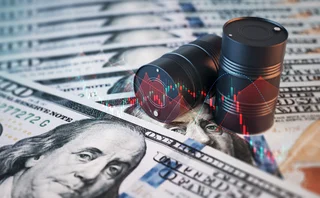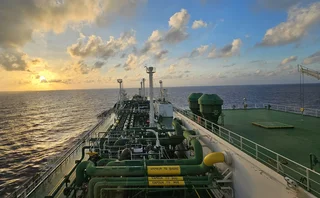Energy Risk Asia Awards 2016: The winners
BP takes energy dealer of the year after ramping up third-party and structured business

The past year has been a turbulent one for both energy producers and consumers in Asia, faced with low oil prices, an increased global supply of liquefied natural gas (LNG) and growing market liberalisation.
For consumers, the 60% drop in the price of Brent crude since mid-2014 resulted in massive losses on hedges executed when prices were above $100 a barrel. For producers, it has created razor-thin margins and a pressing need to manage cashflow and lock in profits. This is now a prerequisite for obtaining much-needed funding.
While many banks have pulled back from physical commodities and reserve-based lending, other counterparties have really stepped up their offering in Asia. Oil and gas major BP – this year's energy dealer of the year – has been increasingly partnering with Asian producers over the past 18 months. Its aim is to offer holistic solutions that provide producers with access to various financial services, says Iain Lawson, BP's Singapore-based head of structured products for the eastern hemisphere. "We will step in to off-take the crude and also provide a hedge, or even a fixed price for it, which makes the project more bankable for a lender than a small producer standing alone," he says.
BP has been equally active with consumers, in some cases helping to restructure distressed hedges. BNP Paribas, the winner of our oil dealer of the year award, has also been active in this area, leveraging liquidity for consumer transactions from structures put in place with refineries. Much of this work has taken place in China, where the bank – also 2016's base metals dealer of the year – has also grown its presence in the base metals market, setting up shop in onshore China earlier this year. The BNP Paribas China metals desk provides physical metal deliveries, as well as financing and hedging to local companies and onshore subsidiaries of multinational clients.
Price volatility and the need to preserve working capital has been a theme across all commodities in the last year, especially precious metals. Citi's increased activity, especially in gold markets across Asia, won it our precious metals dealer of the year award. Its inventory financing solutions combining risk management were particularly noteworthy.
Renewable energy has become a greater focus in Asia recently as governments try to meet growing energy demand while reducing pollution. This has created a huge need for project financing, which Societe Generale Corporate & Investment Banking (SG CIB) – this year's commodity finance house of the year – stepped in to meet.
"We can see a clear acceleration of renewable energy in Asia-Pacific, so it's at the centre of our strategy," says Daniel Mallo, the bank's Asia-Pacific head of energy, infrastructure, metals and mining finance.
Asia's electricity and gas markets are also developing quickly, with Japan's energy market liberalisation central to this. The Singapore Exchange, this year's exchange of the year, has been quick to respond to the changing needs of the market, pushing ahead with its electricity, LNG and freight offerings.
As the Asian market becomes ever more complex, the need has grown for sophisticated commodity trading and risk management (CTRM) software and effective ways of managing data. Both OpenLink, winner of our CTRM and ETRM software house of the year, and GlobalView, our data provider of the year, have recently developed products particularly applicable to Asia.
For more details on our awards, please click on the links below.
Oil dealer of the year: BNP Paribas
Precious metals dealer of the year:Citi
Base metals dealer of the year: BNP Paribas
Exchange of the year: Singapore Exchange
Commodity finance house of the year: Societe Generale
CTRM, ETRM software house of the year: OpenLink
Data provider of the year: GlobalView
More on Risk management
CRO interview: Shawnie McBride
NRG’s chief risk officer Shawnie McBride discusses the challenges of increasingly interconnected risks, fostering a risk culture and her most useful working habits
Increasingly interconnected risks require unified risk management
Operational risk is on the rise according to a Moody's survey, making unified risk management vital, say Sapna Amlani and Stephen Golliker
Energy Risk Europe Leaders’ Network: geopolitical risk
Energy Risk’s European Leaders’ Network had its first meeting in November to discuss the risks posed to energy firms by recent geopolitical developments
Energy Risk US Leaders’ Network: tackling volatility
Energy Risk’s inaugural US Leaders’ Network convened in Houston in October to discuss risk management challenges caused by geopolitical upheaval, policy uncertainty and volatility
LNG trading strategies set to change amid major market shifts
The global LNG market is on the brink of significant changes set to alter trading dynamics and market behaviour, say analysts
Why commodity finance is ripe for stablecoin
Digital currency brings cost efficiencies to financing, but its real benefit to commodity firms lies in making huge pools of new capital available, write Jean-Marc Bonnefous and Ronan Julien
US shutdown leaves commodity traders without key data
Commodity traders are ‘flying blind’ without Commitment of Traders reports
Energy Risk at 30: Learning from the past
Energy Risk looks back at the seminal events and developments that have shaped today’s energy markets








